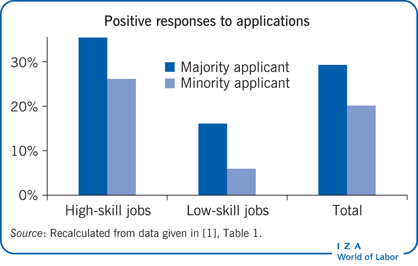Elevator pitch
Anti-discrimination policies play an important role in public discussions. However, identifying discriminatory practices in the labor market is not an easy task. Correspondence testing provides a credible way to reveal discrimination in hiring and provide hard facts for policies. The method involves sending matched pairs of identical job applications to employers posting jobs—the only difference being a characteristic that signals membership to a group.
Key findings
Pros
The correspondence testing (CT) method reveals discriminatory practices at the initial stage of the recruitment process.
The CT method can be used to test for hiring discrimination based on race or ethnicity, gender, age, sexual orientation.
The CT method can determine if hiring discrimination varies by occupation and/or region.
The CT method can increase our knowledge of what characterizes recruiters who discriminate.
The results can guide policies to prevent discrimination in hiring and to inform employers.
Cons
The CT method only measures discrimination at the first stage in the hiring process, not in wages or promotions.
The CT method captures only those firms that use formal search methods, which casts doubts about external validity.
It is not possible to attribute employer preferences as solely responsible for the result.
Overuse of the CT method might encourage employers to use alternative search methods for workers.
The CT method should not be used as sole evidence in legal proceedings.
